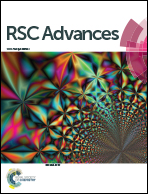Metal-to-insulator transition near room temperature in graphene oxide and graphene oxide + TiO2 thin films
Abstract
Thin films of graphene oxide (GO) and a composite of graphene oxide with titanium oxide (GO + TiO2) were prepared via an alternative chemical route based on Hummer's method. The morphology and crystalline structure of the GO and GO + TiO2 thin films were investigated by X-ray power diffraction (XRD) and scanning electron microscopy (SEM). Anatase TiO2 nanostructures were incorporated into the bulk and surface of GO. Ultraviolet-visible spectroscopy (UV-vis) and Fourier transform infrared spectroscopy (FTIR) were also performed in order to corroborate with the results obtained by XRD, SEM and TEM. The electrical characterization of GO and GO + TiO2 TFs was performed using the four-probe van der Pauw method from 400 K down to 77 K. The resistivity, carrier density and carrier mobility in the TFs were determined as a function of temperature. It was found that the conductivity and mobility increased with the incorporation of TiO2 on GO; however, the concentration of free-carriers decreased. The analysis of the temperature dependence of the resistivity also showed that both films present a metal-to-insulator transition (MIT) near room temperature, at 280 K and 260 K for GO and GO + TiO2, respectively. Thus, for temperatures near 300 K the carrier density, thermally induced in GO and GO + TiO2 thin films, is so high that both the systems suffer a Mott MIT, which increases the prospects of using these films in a novel class of electronics, spintronics and photonics.


 Please wait while we load your content...
Please wait while we load your content...